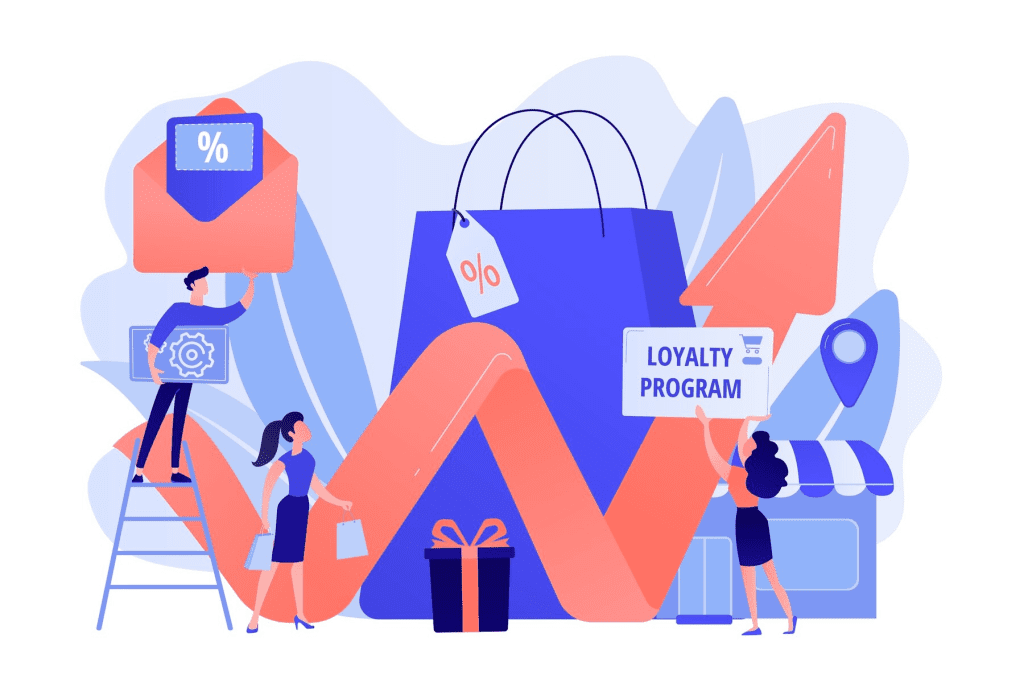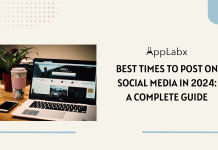Key Takeaways
- Audience Segmentation Is the Foundation: Understanding your audience’s demographics, psychographics, and behaviours is the cornerstone of effective marketing. It empowers you to create personalized campaigns that resonate with your target groups.
- Personalization Drives Engagement: Tailoring your messaging, advertising, and email campaigns based on audience personas leads to higher engagement rates and increased customer satisfaction.
- Data and Continuous Analysis Are Key: Collecting data, creating comprehensive personas, and regularly analyzing results are essential for success. Use key performance indicators (KPIs) to measure the impact of your strategies and refine them over time.
In the ever-evolving landscape of digital marketing, success hinges on a critical factor: Understanding your audience.
Gone are the days of one-size-fits-all marketing approaches.
In today’s fiercely competitive business world, precision is paramount.
This precision is achieved through a strategic art known as audience segmentation.
Welcome to a journey that will transform your marketing endeavours – “Mastering Audience Segmentation: Tailoring Your Marketing for Success.”
Picture this: You have a product or service that you believe in, a message that you’re eager to share with the world, but how do you ensure that it reaches the right ears, resonates with the right hearts, and converts into meaningful actions?
The answer lies in the science and art of audience segmentation.
This blog is your definitive guide to demystifying audience segmentation and unlocking its unparalleled potential.
Whether you’re a seasoned marketing professional, a small business owner, or just dipping your toes into the vast sea of digital marketing, the knowledge and strategies shared here will empower you to elevate your marketing game to unprecedented heights.
Before we dive headfirst into the intricate details of audience segmentation, let’s take a moment to grasp the immense power it holds. Imagine being able to dissect your target market into precise segments, each with its unique characteristics, preferences, and pain points.
By doing so, you gain the ability to craft tailored marketing strategies that resonate deeply with each group.
This, in turn, leads to higher engagement, improved conversion rates, and ultimately, a more substantial return on investment (ROI).
Audience segmentation is not just about dividing your audience into neat little boxes.
It’s about understanding their intricacies, their motivations, and their behaviours.
It’s about recognizing that your audience is not a monolithic entity but a diverse group with individual needs and desires.
When you can speak directly to these needs and desires, your marketing efforts become more efficient and effective.
In the not-so-distant past, marketing was often a game of mass outreach.
Marketers would cast a wide net, hoping to catch as many fish as possible.
However, this approach came with significant drawbacks.
It often resulted in wasted resources, missed opportunities, and a disconnect between businesses and their audiences.
Today, the marketing paradigm has shifted dramatically.
With the rise of digital channels, consumers are bombarded with an overwhelming amount of information daily.
To stand out in this noisy landscape, brands must be hyper-relevant and hyper-personalized.
This is where audience segmentation comes into play as a game-changer.
In the upcoming sections, we will embark on a comprehensive journey through the world of audience segmentation.
We’ll start by establishing a solid understanding of what audience segmentation is and why it’s absolutely vital for modern marketing success.
Next, we’ll explore the various types of audience segmentation, including demographic, psychographic, and behavioural.
We’ll then delve into the nitty-gritty of collecting and analyzing data, providing insights into the tools and techniques that can turn raw data into actionable marketing strategies.
You’ll learn how to gather the right data and how to use it effectively to create laser-focused audience personas.
Speaking of audience personas, our journey will continue with a deep dive into the art of crafting comprehensive and highly targeted audience personas.
You’ll discover the key components of a persona and explore practical case studies showcasing the power of persona-driven marketing.
But we won’t stop at theory. We’ll provide you with practical tips on implementing targeted marketing strategies that leverage your newfound knowledge of audience segmentation.
From customizing content to tailoring advertising campaigns, you’ll gain actionable insights to apply immediately.
In the later stages of our exploration, we’ll discuss how to measure and evaluate the success of your segmentation efforts, including the key performance indicators (KPIs) to watch and the tools to track them.
Plus, we’ll address common challenges and pitfalls, helping you steer clear of common mistakes.
To cap off this enlightening journey, we’ll draw inspiration from real-world case studies of businesses that have mastered audience segmentation, gleaning valuable lessons from their success stories.
In conclusion, “Mastering Audience Segmentation: Tailoring Your Marketing for Success” is your roadmap to unlock the full potential of audience segmentation in the digital age.
Whether you’re striving for higher conversion rates, increased customer satisfaction, or a more substantial ROI, this blog will equip you with the knowledge and strategies to achieve your marketing goals.
So, let’s embark on this transformative journey together. Get ready to revolutionize your marketing approach and position your brand for success in a world where precision and personalization are the keys to triumph.
Welcome to the future of marketing. Welcome to the world of audience segmentation.
Before we venture further, we want to share who we are and what we do.
About AppLabx
From developing a solid marketing plan to creating compelling content, optimizing for search engines, leveraging social media, and utilizing paid advertising, AppLabx offers a comprehensive suite of digital marketing services designed to drive growth and profitability for your business.
AppLabx is well known for helping companies and startups use Digital Marketing to drive web traffic to their websites and web apps.
At AppLabx, we understand that no two businesses are alike. That’s why we take a personalized approach to every project, working closely with our clients to understand their unique needs and goals, and developing customized strategies to help them achieve success.
Mastering Audience Segmentation: Tailoring Your Marketing for Success
- Understanding Audience Segmentation
- Types of Audience Segmentation
- Collecting and Analyzing Data
- Creating Comprehensive Audience Personas
- Implementing Targeted Marketing Strategies
- Measuring and Evaluating Success
1. Understanding Audience Segmentation
In the realm of digital marketing, audience segmentation is the compass that guides your strategies toward success.
It’s not merely about dividing your audience into groups; it’s about understanding the nuances and characteristics that make each group unique.
This section will unravel the concept of audience segmentation, and its significance, and provide relevant examples and data to illustrate its impact.
Definition and Significance
What is Audience Segmentation?
Audience segmentation is the practice of dividing your target audience into distinct groups based on specific criteria or characteristics.

These criteria can encompass demographics, psychographics, behaviour, or any other relevant factors.
The goal is to create smaller, more manageable segments that allow for tailored marketing efforts.
The Significance of Audience Segmentation
Audience segmentation is not a mere marketing buzzword; it’s a game-changer.
Consider these compelling reasons why audience segmentation is so significant:
- Improved Targeting: Segmenting your audience enables you to laser-focus your marketing efforts on the most receptive groups. For example, if you’re an e-commerce site, segmenting by location can help you promote winter apparel to customers in colder regions while showcasing summer attire to those in warmer climates.
- Enhanced Personalization: Personalization is a cornerstone of modern marketing. Segmentation empowers you to deliver highly personalized content, offers, and recommendations. According to a study, 88% of marketers reported measurable improvements from personalization efforts, with a 10% increase in sales on average.
- Higher Conversion Rates: When your marketing resonates with the specific needs and preferences of each segment, you’re more likely to see higher conversion rates. A study found that personalized calls to action (CTAs) performed 202% better than generic CTAs.
Benefits of Effective Audience Segmentation
Effective audience segmentation yields a myriad of benefits for your marketing efforts.
Let’s explore these benefits with examples and relevant data:
Increased ROI
- Example: An email marketing campaign that segments recipients based on their past purchase behaviour can achieve a significantly higher ROI.
Enhanced Customer Engagement
- Example: A social media advertising campaign targeting users based on their interests and behaviours can result in increased engagement.
Reduced Marketing Waste
- Example: By segmenting your audience geographically and tailoring your ad spend accordingly, you can prevent wasteful spending on audiences unlikely to convert.
Improved Customer Satisfaction
- Example: A company offering personalized product recommendations based on past purchases can enhance customer satisfaction. Amazon, for instance, attributes a significant portion of its revenue to its recommendation engine, which is driven by robust audience segmentation.
Competitive Advantage
- Example: Companies that excel in audience segmentation often gain a competitive edge. Netflix, with its sophisticated user profiling and recommendation algorithms, has become a prime example of how audience segmentation can lead to dominance in a competitive market.
Understanding audience segmentation is the cornerstone of modern marketing.
It empowers you to connect with your audience on a deeper level, resulting in improved ROI, enhanced customer engagement, reduced wastage, increased customer satisfaction, and a competitive edge.
As we move forward in this blog, we’ll explore the various types of audience segmentation and how to implement them effectively to achieve these remarkable benefits.
2. Types of Audience Segmentation
Audience segmentation is a versatile tool in your marketing arsenal, and the criteria you use to divide your audience can vary widely.
In this section, we’ll explore the three primary types of audience segmentation: demographic, psychographic, and behavioural.
Each type offers unique insights into your audience, helping you tailor your marketing strategies for maximum impact.
Demographic Segmentation
What is Demographic Segmentation?
Demographic segmentation divides your audience based on measurable characteristics such as age, gender, income, education level, marital status, and more.
It’s one of the most commonly used segmentation methods due to its simplicity and practicality.

Why It Matters:
Demographic data provides essential insights into your audience’s basic characteristics and helps in crafting messaging and campaigns that resonate with specific groups.
Here are some demographic segmentation categories:
- Age: Age is a fundamental demographic variable. For instance, a toy manufacturer might target parents of young children for its marketing campaigns.
- Gender: Gender-based segmentation is crucial for products or services with gender-specific appeal. An example is a cosmetics brand tailoring its products and ads to women.
- Income: Income segmentation allows you to target customers based on their purchasing power. Luxury brands, for instance, focus on high-income individuals.
Psychographic Segmentation
What is Psychographic Segmentation?
Psychographic segmentation goes beyond demographics, diving into the psychological aspects of your audience. It focuses on their lifestyles, interests, values, attitudes, and behaviours.

This method delves into what makes your audience tick, providing insights into their motivations and decision-making processes.
Why It Matters:
Understanding the psychographics of your audience helps you create messaging that resonates on a deeper level.
Here are some psychographic segmentation categories:
- Lifestyle: Consider the lifestyle choices of your audience. Are they adventure-seekers, health-conscious, or environmentally aware? Tailoring your messaging to their lifestyle can make your brand more appealing.
- Interests and Hobbies: Identify your audience’s interests and hobbies, and align your content with their passions. For example, a travel agency can target adventure enthusiasts with specialized travel packages.
- Values and Beliefs: People are drawn to brands that share their values. An eco-friendly brand may attract consumers who prioritize sustainability and environmental causes.
Behavioural Segmentation
What is Behavioral Segmentation?
Behavioural segmentation divides your audience based on their past actions, including purchase history, online behaviour, brand loyalty, and engagement with your marketing materials.

It provides insights into what your audience has done in the past and how they are likely to behave in the future.
Why It Matters:
Behavioural data is highly predictive and allows you to craft highly targeted campaigns.
Here are some examples of behavioural segmentation:
- Purchase History: Segmenting based on past purchases can help you recommend complementary products or re-engage lapsed customers.
- Online Behavior: Tracking how users interact with your website or app can inform personalized content recommendations and email campaigns.
- Brand Loyalty: Recognizing and rewarding loyal customers can enhance their loyalty further and encourage advocacy.
These three primary types of audience segmentation—demographic, psychographic, and behavioural—offer powerful insights into your audience’s characteristics, motivations, and behaviours.
By leveraging these insights, you can create highly targeted and personalized marketing campaigns that resonate with your audience, resulting in increased engagement and improved conversion rates.
3. Collecting and Analyzing Data
The success of audience segmentation hinges on your ability to gather and analyze data effectively.
In this section, we’ll delve into the crucial aspects of collecting and analyzing data for audience segmentation, providing actionable insights and relevant examples to guide you on this critical journey.
Methods for Data Gathering
Surveys
Surveys are a direct and valuable way to collect data directly from your audience.
They allow you to ask specific questions and gain insights into preferences, opinions, and demographics.
Example: An online fashion retailer can conduct surveys to understand customer preferences for clothing styles, colours, and sizes, thereby tailoring product offerings.
Social Media Monitoring
Monitoring social media platforms provides real-time data on audience behaviour, sentiments, and trends.
Social listening tools can help you track mentions, engagement, and customer feedback.
Example: A restaurant can use social media monitoring to gauge customer sentiment about its menu, identify popular dishes, and address negative reviews promptly.
Website Analytics
Tools like Google Analytics provide valuable data on website visitors, including demographics, source of traffic, pages visited, and conversion rates. This data helps you understand how visitors interact with your site.
Example: An e-commerce website can use analytics to identify which products are most popular, which pages have high bounce rates, and where visitors are dropping off during the checkout process.
Tools and Platforms for Data Analysis
Google Analytics
Google Analytics is a powerful and widely used tool for tracking website traffic and user behaviour.
It provides insights into user demographics, location, and behaviour on your website.
Example: An online education platform can use Google Analytics to determine which courses are most popular among users from different geographic locations.
Customer Relationship Management (CRM) Software
CRM software helps businesses manage customer interactions and collect data about customer preferences and purchase history. This data is invaluable for personalized marketing efforts.
Example: An e-commerce business can use CRM data to segment customers based on their past purchases and send targeted product recommendations via email.
Social Media Analytics Tools
Tools like Hootsuite or Sprout Social provide detailed analytics on social media engagement, allowing you to track likes, shares, comments, and demographics of your followers.
Example: A fashion brand can use social media analytics to identify the most engaged age group and create content tailored to their preferences.
By leveraging the right methods and tools, you can gain profound insights into your audience’s behaviour and preferences, enabling you to create tailored marketing strategies that drive engagement and conversions.
4. Creating Comprehensive Audience Personas
Audience personas are the heart and soul of effective audience segmentation.
In this section, we’ll explore the art of crafting comprehensive audience personas.
These detailed profiles of your target audience help you understand their motivations, preferences, and pain points.
By the end of this section, you’ll be equipped to create personas that drive successful marketing campaigns.
The Process of Developing Audience Personas
Research and Data Analysis
- Gather Data: Use the methods mentioned earlier to collect a wealth of data, including demographics, psychographics, and behavioural insights.
- Identify Patterns: Analyze the collected data to identify common patterns, such as shared interests, preferences, or pain points among different segments of your audience.
Persona Creation
- Define Persona Categories: Based on your analysis, create categories for your personas. These categories should represent distinct groups within your audience.
- Profile Your Personas: For each category, build a detailed persona profile. Include information such as demographics, interests, behaviours, goals, and challenges.
- Assign Names and Imagery: Give each persona a name and even a visual representation (e.g., a stock photo). This helps humanize the personas and makes them relatable to your team.
- Craft Persona Narratives: Write narratives that describe your personas’ lives, motivations, and pain points in a way that resonates with your team.

Key Components of an Effective Persona
Demographics
- Age: Specify the persona’s age range.
- Gender: Identify the gender, if relevant.
- Location: Pinpoint their geographical location.
- Income: Note their income level, if applicable.
- Education: Mention their education level.
Example: Imagine a persona named “Tech-Savvy Millennial Mark” – a 30-year-old male from San Francisco with a bachelor’s degree in computer science and an annual income of $75,000.
Pain Points and Challenges
- Identify Pain Points: Understand the problems or challenges that your persona faces.
- Frustrations: List their frustrations related to your product or service.
- Obstacles: Determine what obstacles prevent them from achieving their goals.
Example: “Tech-Savvy Millennial Mark” struggles with the complexity of certain software tools, leading to time wasted troubleshooting issues instead of focusing on his projects.
Goals and Aspirations
- Professional Goals: Outline their career ambitions and objectives.
- Personal Aspirations: Discover their personal goals and desires.
- How Your Offering Helps: Explain how your product or service can help them achieve these goals.
Example: Mark aspires to become a top-notch software developer and hopes to streamline his work processes, making your software’s user-friendliness appealing to him.
Content Preferences
- Content Formats: Identify the types of content they prefer (e.g., blog posts, videos, infographics).
- Information Sources: Determine where they seek information (e.g., industry blogs, social media, forums).
Example: Mark prefers video tutorials and follows tech influencers on YouTube for guidance on software tools.
Incorporating these key components into your audience personas can greatly enhance your marketing strategies.
These personas serve as compasses, guiding you to create content and campaigns that resonate deeply with your audience.
As we move forward in this blog, we’ll delve into the practical implementation of audience segmentation and persona-driven marketing strategies.
5. Implementing Targeted Marketing Strategies
Now that you have created comprehensive audience personas, it’s time to put them to work.
In this section, we’ll explore the practical aspects of implementing targeted marketing strategies that leverage your personas.
These strategies allow you to connect with your audience on a deeper level, resulting in higher engagement, improved conversion rates, and ultimately, greater marketing success.
Customizing Content for Different Audience Segments
Tailoring Your Message
- Persona-Centric Messaging: Craft messaging that speaks directly to the pain points, goals, and aspirations of each persona. Ensure that your content addresses their specific needs.
- Content Formats: Use the preferred content formats of each persona. For example, if one persona prefers blog posts while another prefers video content, create both.
Relevant Example:
- Netflix: Netflix personalizes its homepage based on user behaviour, recommending movies and shows that align with each user’s viewing history and preferences. This tailored content approach keeps users engaged and coming back for more.
Tailoring Advertising Campaigns
Segmentation in Advertising
- Platform Selection: Choose the right advertising platforms that align with the demographics and interests of each persona. For instance, Instagram might be more effective for reaching younger audiences, while LinkedIn is better for a professional audience.
- Ad Creatives: Design ad creatives that resonate with the values and preferences of your personas. This includes imagery, copy, and overall ad design.
Relevant Example:
- Coca-Cola: Coca-Cola’s “Share a Coke” campaign is a classic example of tailoring advertising to a specific audience. They printed common names on their bottles and cans, encouraging customers to find their own names or share a Coke with a friend. This campaign resonated with consumers on a personal level.
Personalizing Email Marketing
Personalization in Emails
- Dynamic Content: Use dynamic content in your email marketing campaigns to customize the email content based on the recipient’s persona and behaviour.
- Segmented Email Lists: Send emails to segmented lists, ensuring that each email is relevant to the recipient’s interests and preferences.
Relevant Example:
- Amazon: Amazon’s personalized email recommendations are a prime example of effective email personalization. They analyze a customer’s past purchases and browsing history to suggest products that match their interests, leading to higher click-through and conversion rates.
Implementing targeted marketing strategies based on audience segmentation and persona-driven insights is a surefire way to boost engagement and conversion rates.
By customizing your messaging, tailoring your advertising campaigns, and personalizing your email marketing, you’ll connect with your audience on a deeper level, ultimately driving marketing success.
6. Measuring and Evaluating Success
In the world of marketing, data is king.
To determine the effectiveness of your audience segmentation and targeted marketing strategies, you must measure and evaluate your efforts systematically.
In this section, we’ll explore key performance indicators (KPIs), tools, and methods for measuring success, and provide relevant examples and data to illustrate their importance.
Key Performance Indicators (KPIs) for Tracking Marketing Success
Conversion Rates
- Visitor-to-Lead Conversion Rate: Calculate the percentage of website visitors who become leads by filling out forms or subscribing to newsletters.
- Lead-to-Customer Conversion Rate: Measure the percentage of leads who ultimately become paying customers.
Return on Investment (ROI)
- Marketing ROI: Determine the return on investment for your marketing campaigns by comparing the revenue generated against the cost of marketing efforts.
Customer Satisfaction
- Net Promoter Score (NPS): Measure customer satisfaction and loyalty by asking customers how likely they are to recommend your brand to others.
- Customer Feedback: Collect and analyze customer feedback through surveys and reviews to gauge satisfaction and identify areas for improvement.
Engagement Metrics
- Click-Through Rate (CTR): Assess the effectiveness of your email and online ads by measuring the percentage of users who click on your content or ads.
- Bounce Rate: Evaluate the quality of your website traffic by analyzing the percentage of visitors who leave without interacting with your site.
Tools and Methods for Measuring KPIs
Google Analytics
- Goal Tracking: Set up goals in Google Analytics to track specific actions on your website, such as form submissions or product purchases.
- E-commerce Tracking: Implement e-commerce tracking to measure revenue and conversion rates for online stores.
Marketing Automation Platforms
- Email Marketing Analytics: Leverage analytics provided by email marketing platforms to track open rates, click-through rates, and conversion rates for email campaigns.
- Lead Scoring: Use lead scoring within marketing automation platforms to evaluate the quality of leads based on their interactions with your content.
Customer Relationship Management (CRM) Software
- Sales Funnel Tracking: Monitor the movement of leads through your sales funnel, from initial contact to conversion.
Surveys and Feedback Tools
- Online Surveys: Collect customer feedback and satisfaction data using online survey tools like SurveyMonkey or Typeform.
The Importance of Ongoing Analysis and Optimization
A/B Testing
- A/B Testing: Continuously test variations of your marketing content and strategies to identify what works best for each audience segment.
Data Analysis
- Data Analysis: Regularly analyze your data to identify trends, patterns, and areas where improvements are needed.
Measuring and evaluating the success of your audience segmentation and targeted marketing efforts is essential for optimizing your strategies and achieving better results.
By tracking KPIs, using relevant tools, and conducting ongoing analysis, you can refine your marketing approach and enhance customer satisfaction, ultimately driving greater success for your business.
Conclusion
In the ever-evolving landscape of digital marketing, the quest for success requires a nuanced understanding of your audience.
As we conclude this journey through the intricacies of audience segmentation and its profound impact on marketing, you’re equipped with a wealth of knowledge and strategies that can transform your marketing game and elevate your brand to new heights.
Audience segmentation is not just a buzzword; it’s the lifeblood of modern marketing.
It’s the art and science of dividing your audience into distinct segments based on demographics, psychographics, and behaviours, and it serves as the compass guiding your marketing efforts.
Through this comprehensive exploration, we’ve uncovered the significance of audience segmentation and its pivotal role in creating personalized, engaging, and effective marketing campaigns.
Gone are the days of one-size-fits-all marketing.
Today, consumers are inundated with information, making it vital for brands to stand out by delivering content that speaks directly to the needs and desires of their target audience.
Audience segmentation offers a solution to this challenge by enabling you to tailor your marketing strategies with precision.
It’s about understanding that your audience is not a monolithic entity, but a diverse group with individual preferences, behaviours, and aspirations.
We’ve explored the three primary types of audience segmentation: demographic, psychographic, and behavioural.
Demographics provide the basic framework, psychographics delve into motivations and values, and behavioural segmentation examines past actions and interactions.
With these building blocks, you can craft a detailed picture of your audience and their unique characteristics.
Collecting and analyzing data are the foundations upon which successful audience segmentation is built.
Surveys, social media monitoring, website analytics, and tools like Google Analytics and CRM software empower you to gather valuable insights.
These insights are then transformed into actionable audience personas that serve as the guiding stars of your marketing campaigns.
The art of creating comprehensive audience personas brings your audience segments to life.
By defining their demographics, pain points, goals, and content preferences, you breathe life into these personas, making them relatable to your marketing team.
With personas in hand, you’re ready to put your insights to work.
Tailoring your content, customizing advertising campaigns and personalizing email marketing are the keys to connecting with your audience on a profound level.
Real-life successes, such as Netflix’s personalized recommendations and Coca-Cola’s “Share a Coke” campaign, demonstrate the remarkable impact of targeted marketing.
The journey doesn’t end with implementation; it continues with measurement and evaluation.
Key performance indicators (KPIs) like conversion rates, ROI, and customer satisfaction provide tangible metrics to gauge the effectiveness of your strategies.
Tools like Google Analytics, marketing automation platforms, and CRM software empower you to track progress.
A/B testing, data analysis, and continuous refinement are the engines that drive your marketing machine.
They enable you to adapt to changing audience behaviours and preferences, ensuring your strategies remain effective over time.
In the words of marketing guru Seth Godin, “Don’t find customers for your products; find products for your customers.” Audience segmentation is the compass that helps you navigate this path.
It’s about meeting your audience where they are, understanding their needs, and delivering value.
As you embark on your journey of mastering audience segmentation, remember that this is not just a guide; it’s a roadmap to marketing success. It’s a call to action to apply these principles, embrace change, and take your marketing efforts to the next level.
With the knowledge gained from this exploration, you have the power to revolutionize your marketing approach, delight your audience, and position your brand for success in a world where precision and personalization reign supreme.
So, take the reins of your marketing destiny. Welcome to the future of marketing. Welcome to the world of audience segmentation, where the path to success is personalized, and the possibilities are boundless.
Your audience awaits your message, tailor-made for their hearts and minds. It’s time to embark on this transformative journey and unleash the full potential of your marketing endeavours.
If you are looking for a top-class digital marketer, then book a free consultation slot here.
If you find this article useful, why not share it with your friends and business partners, and also leave a nice comment below?
We, at the AppLabx Research Team, strive to bring the latest and most meaningful data, guides, and statistics to your doorstep.
To get access to top-quality guides, click over to the AppLabx Blog.
People Also Ask
What are the 5 types of audience segmentation?
The five types of audience segmentation are:
- Demographic Segmentation: Dividing the audience based on age, gender, income, education, etc.
- Psychographic Segmentation: Categorizing people based on interests, hobbies, values, and lifestyles.
- Behavioural Segmentation: Analyzing buying patterns, product usage, and brand interactions.
- Geographic Segmentation: Segmenting the audience based on location, such as country, city, or climate.
- Technographic Segmentation: Focusing on the audience’s tech preferences and usage, like software, devices, and platforms.
What is an example of audience segmentation?
A digital marketing agency in Singapore might use geographic segmentation to target local businesses in specific neighbourhoods. By tailoring ads and content to the unique needs of these local businesses, the agency maximizes engagement and relevance, ultimately boosting their client’s ROI.
What are the 4 major segmentation categories?
The four major segmentation categories are demographic, psychographic, behavioural, and geographic. Demographic focuses on age, gender, income; psychographic on interests, values; behavioral on buying patterns; and geographic on location-based factors. These categories help target diverse audience segments effectively.
































